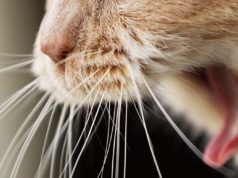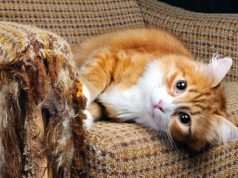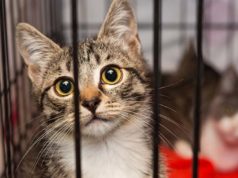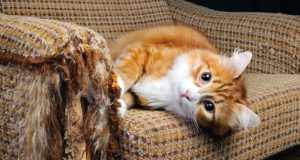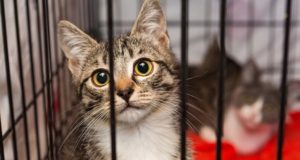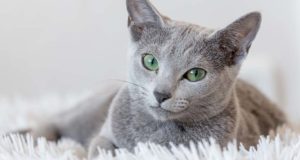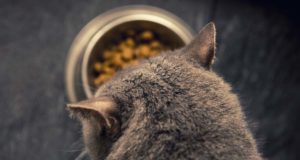For any responsible cat owner, you want to provide your pet with a secure and healthy environment. One important aspect of a healthy life, is your decision on what food you use for your cat’s meals. Choosing the best cat food for your cat may be difficult at first, but once you understand the basics, it all becomes fairly easy.
You may have read many articles on the dietary needs of cats. This will give you an idea on what the best foods are that we can give to our feline friends? Let’s not forget that a cat is a meat eater, an obligate carnivore not an omnivore, like us. Like it, or not, this means your cat gains its nutrition almost exclusively from the flesh of other animals. A cat needs very few carbs in its diet.
ALSO READ: How Much to Feed a Cat and How Often Should You Feed Your Cat
12 Tips to Choosing the Best Cat Food for Your Feline
What foodstuffs are best for your pet cat? Let’s start at the top of the range, and work our way down with tips on how to choose the best cat food for your feline.
1. Homemade cat food meals should consist of meat, either raw or cooked.
If feeding homemade cat food meals that are raw, then it should be fresh. Cat’s can suffer from bacterial infection of bad meat, as easily as we can. Rule of thumb, if it’s bad for you, then it’s bad for kitty too.
2. With homemade meals, meat should be lean cuts of beef, or chicken and turkey. You could even use mince.
Cooking for your cat means paying extra attention to the type of nutrition you provide her with. While homemade cat food may be healthier at times, you must follow directions carefully to avoid having a malnourished feline.
3. If you wish you can add a small amount of whole grains, such as a little cornmeal or polenta, to your home cooked meat.
 Don’t give your cat human cereals to bulk out their feed. These contain sugar and salt, not meant for a cat’s digestive system. Other grains, such as couscous, should be cooked, for easy digestion. Brown rice mashed up, is a great filler with the meat.
Don’t give your cat human cereals to bulk out their feed. These contain sugar and salt, not meant for a cat’s digestive system. Other grains, such as couscous, should be cooked, for easy digestion. Brown rice mashed up, is a great filler with the meat.
Remember you are only giving this grain to balance out the meal, so keep the grain portions small. Some grains can cause allergies. For a cat diagnosed with allergies, the first foodstuff to be omitted from its diet should be the grains and there are plenty of grain free cat food brands out there.
3. Fish is a bone of contention.
It’s a little bit like the myth of cat’s love milk, when in fact dairy products are not good for a cat’s digestive system. Same goes with raw fish. Fish should only be an occasional treat, and it should be cooked. Tinned fish such as tuna, is fine, so long as it’s not too often. Cats do benefit from the omega-3 fats.
4. Some dairy products that are safe to give your cat to eat.
As we’ve mentioned this, cooked eggs are a great source of protein. Scrambled is best, with no salt or milk. A little cottage cheese is also safe. Never give dairy products in large doses, or very often, unless prescribed by your vet. The odd lump of mild cheese might be accepted as a tasty treat, or it might get tossed around as a play thing, and ignored. Either way it is safe, in small amounts.
5. Fruits and vegetables.
Cats, unlike most mammals, do not have the taste buds necessary to taste anything sweet. They are unlikely to take any interest in fruit. In the wild, a cat would eat the digested vegetables in the gut of their prey.
Cooked vegetables are an added bonus for your cat. It won’t want a large portion, but you could pop in some cooked carrots with the home cooked meal. Vegetables are good source of antioxidants and certain vitamins, so again, small portions are okay.
6. Tinned cat meat.
Canned/wet cat food is often most recommended. If you can, buy the higher quality tinned cat meat instead. A good label to look for is the Association of American Feed Control Officials (AAFCO). Though this does not guarantee a quality product, but it will be a safe one.
7. When looking for tinned food, one way to find the best, is to read those listed ingredients.
Check that protein level is high, and that it is one of the first ingredients mentioned. Grain should be very low down on the list of ingredients, as we have already mentioned. A cat needs very few carbs in it diet, in the wild they make up around 5-10%. Unless your cat has kidney problems and requires low protein cat food, it’s best to stick to highest protein.
8. Some good labels of tinned food are:
- Tiki Cat. This is a high quality cooked meat or fish based product. Claiming to be high in protein and moisture. Their food has no artificial ingredients and zero grains or carbs.
- According to their blurb, they use top quality muscle meat, such as chicken breast and good cuts of beef.
- Natures Logic Cat food. Another product name that promises 70% human-graded meat. Grain and gluten free. No sugars or fillers and no artificial anything.
- Other similar products are: Bravo, Hound and Gatos, Ziwi, Merrick and there are many others you can try. Remember, read the label, and then you know what you are getting in the tin.
9. Dry cat foods.
Not all cat owners are happy with feeding dry ingredients all the time. Indeed, dry food has been related to obesity in cats, as it contains too many carbs. Also, the fact that dried food is always available to kitty, so they can eat freely with no set timetable. This can lead to over eating.
It does have some benefits in that it is a good source of extra calories and vitamins, that some tinned foods don’t provide. A balance mixture of dry and wet food could prove right for your cat, under your close supervision.
10. Ideally your cat should have access to water all the time.
If he does have his own bowl, then do remember to give it a daily clean. Some cats prefer running water, so may hang around the tap for you to turn it on.
11. Age related dietary needs.
A kitten will need a lot more nutrition than an elderly cat or adult cat. That’s why there are lots of pet foods on the market that are graded by age, or particular conditions, such as kitten food brands, adult cat foods or senior cat food brands.
12. Disease related cat foods.
There are also cat foods for specific diseases in cats. These could be anything from obesity, to arthritic, to sensitive stomach cat food. Even dental treats are widely available, meant to be good to chew on to take away excess plaque.
What you feed your cat is a personal choice. What one cat likes, another may dislike. Cats can be fussy eaters, but meat is always the better option, as it is closer to its natural diet.
READ NEXT: How to Feed a Cat with Liver Disease




